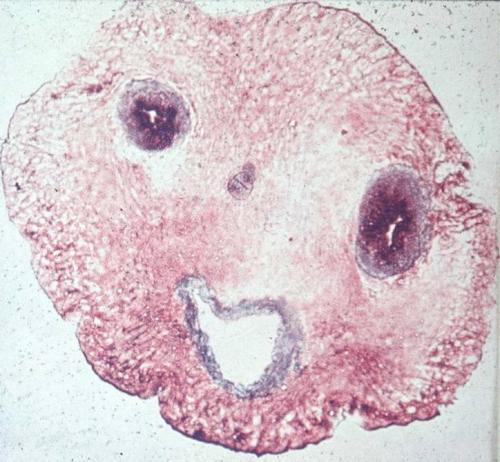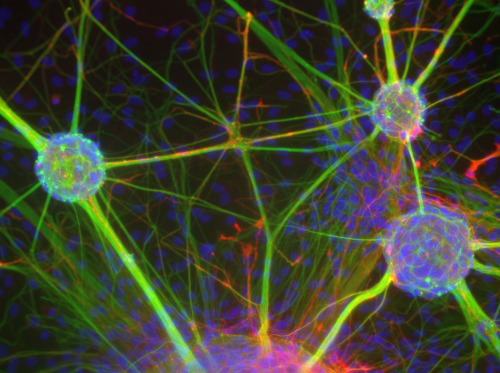Интересные нововсти на http://www.biologynews.net/archives/2010/04/09/empathy_and_violence_have_similar_circuits_in_the_brain.html
"Just as our species could be considered the most violent, since we are capable of serial killings, genocide and other atrocities, we are also the most empathetic species, which would seem to be the other side of the coin", Luis Moya Albiol, lead author of the study and a researcher at the UV, tells SINC.
This study, published in the most recent issue of the Revista de Neurología, concludes that the prefrontal and temporal cortex, the amygdala and other features of the limbic system (such as insulin and the cingulated cortex) play "a fundamental role in all situations in which empathy appears".
Moya Albiol says these parts of the brain overlap "in a surprising way" with those that regulate aggression and violence. As a result, the scientific team argues that the cerebral circuits – for both empathy and violence – could be "partially similar".
"We all know that encouraging empathy has an inhibiting effect on violence, but this may not only be a social question but also a biological one – stimulation of these neuronal circuits in one direction reduces their activity in the other", the researcher adds.
This means it is difficult for a "more empathetic" brain to behave in a violent way, at least on a regular basis. "Educating people to be empathetic could be an education for peace, bringing about a reduction in conflict and belligerent acts", the researcher concludes.
Techniques for measuring the human brain "in vivo", such as functional magnetic resonance imaging, are making it possible to find out more about the structures of the brain that regulate behaviour and psychological processes such as empathy.
Source : FECYT - Spanish Foundation for Science and Technology
16.04.2010
Сочувствие и жестокость связаны на уровне мозга
Новая система измерения параметров клеток
Читаю на http://www.biologynews.net/archives/2010/04/12/mit_new_cell_measurement_system.html
Using a sensor that weighs cells with unprecedented precision, MIT and Harvard researchers have measured the rate at which single cells accumulate mass — a feat that could shed light on how cells control their growth and why those controls fail in cancer cells.
The research team, led by Scott Manalis, MIT associate professor of biological engineering, revealed that individual cells vary greatly in their growth rates, and also found evidence that cells grow exponentially (meaning they grow faster as they become larger).
The new measurement system, reported in the April 11 edition of the journal Nature Methods, is the first technique that can measure cells' mass as they grow over a period of time, ranging from five to 30 minutes. Previous methods for measuring cell growth rates have focused on volume or length measurements, and have not yet exhibited the necessary precision for revealing single cell growth models.
How they did it: The cell-mass sensor, which Manalis first demonstrated in 2007, consists of a fluid-filled microchannel etched in a tiny silicon slab that vibrates inside a vacuum. As cells flow through the channel, one at a time, their mass slightly alters the slab's vibration frequency. The mass of the cell can be calculated from that change in frequency, with a resolution as low as a femtogram (10-15 grams).
Michel Godin, a former postdoctoral associate in Manalis' lab and co-lead author of the paper, developed a way to trap a cell within the microchannel by precisely coordinating the flow direction. That enables the researchers to repeatedly pass a single cell through the channel every second or so, measuring it each time it moves through.
The researchers studied four types of cells: two strains of bacteria (E. coli and B. subtilis), a strain of yeast and mammalian lymphoblasts (precursors to white blood cells). They showed that B. subtilis cells appear to grow exponentially, but they did not obtain conclusive evidence for E. coli. That's because there is so much variation between individual cell growth rates in E. coli, even for cells of similar mass, says Francisco Delgado, a grad student in Manalis' lab and co-lead author of the paper.
If cells do grow exponentially, it means there must be some kind of mechanism to control that growth. Otherwise, when cells divide into two slightly different-sized daughter cells, as they often do, the larger cell in each generation would always grow faster than the smaller cell, leading to inconsistent cell sizes.
"If there were no control over the process, the variation in cell size would be all over the map," says Marc Kirschner, professor of systems biology at Harvard Medical School and an author of the paper. However, biologists don't know yet how that control mechanism might work.
Next steps: In their current studies, the researchers are tagging proteins inside the cell with fluorescent molecules that reveal what stage of the cell cycle the cell is in, allowing them to correlate cell size with cell cycle position. They are also working on a way to add chemicals such as nutrients, antibiotics and cancer drugs to the fluid inside the microchannel, so they can study how those substances affect growth rates.
Source : Massachusetts Institute of Technology










